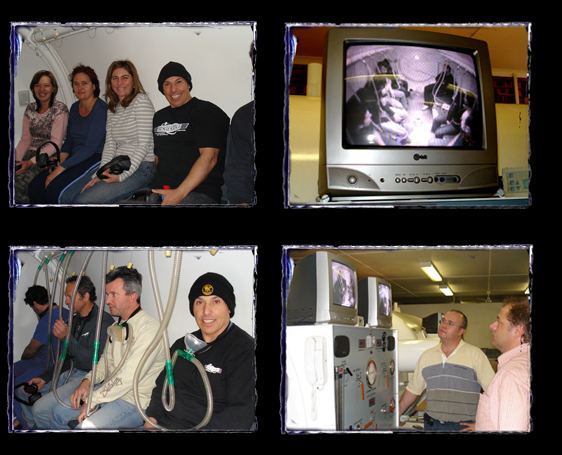 By Nuno Gomes When I speak to any novice diver and ask, “Did you get narced on that 50m air dive?” The answer is, mostly, “No not at all!!!”, or maybe, “Just a little bit!!!!” The truth may be very different indeed. What’s more, it may also just be that the methods for the determination of how narcotic gases are at depth leave much to be desired. Currently the Equivalent Air Depth (EAD) or Equivalent Narcotic Depth (END) equation below ( Equation 1.0) is commonly being used. Taking into account that narcosis levels can vary from day to day for the same diver and for the same dive, the (EAD) or (END) equation does give a rough indication of what is to be expected at depth in terms of narcosis. It may be adequate for many dives, but from my experience, it just does not work adequately for the deeper Nitrox, Heliair, Trimix and Heliox dives. EQUATION 1.0 EAD or END = ((1-(FHe+FO))*((D+10)/0.79))-10 (equation 1.1 for Trimix) Or EAD or END = ((FN2/0.79)*(10+D))-10 (equation 1.2 for Nitrox) Where: EAD = Equivalent Air Depth END = Equivalent Narcotic Depth FHe = Fraction of Helium FO = Fraction of Oxygen D = Depth FN2 = Fraction of Nitrogen Example 1: Dive to 90m with a Trimix of 16 % Oxygen, 34% of Nitrogen and 50% Helium, a diver would expect to have an EAD or END of 33m (according to Equation 1.1). How accurate is this? My experience of deep diving tells me that it is far from accurate. When diving to 90m on the above Trimix, it feels much more like a 45m air dive. Inert gas narcosis is very complex, however it is primarily related to Atomic Mass Units (amu) of the gas and therefore the gas density. The greater the density of the gas the more narcotic it is. Other factors in narcosis are the gas solubility, as well as the saturation and de-saturation speeds. These are inversely proportional to the square root of the atomic mass. Hydrogen will saturate and de-saturate 3.7 times faster than Nitrogen; on the other hand, Helium will saturate and de-saturate 2.7 times faster than Nitrogen. The diver’s fitness is very important, and so is proper ventilation of the lungs in order to prevent Carbon Dioxide from building up in the lungs. This build up of CO2 will increase inert gas narcosis. Table 1.0 Properties of Inert Gases, Air and Oxygen * 
*Although Oxygen is not an inert gas, it is also included in the above table because it is also a narcotic gas. In view of the above and in terms of my past experience in deep mixed gas diving, the following provisional equation is proposed to better describe the effects of diving gases under pressure: EQUATION 2.0 * TND = (((FO2*1.333)+(FN2*1.165)+(FHe*0.166))* ((D+10))/1.205)-10 Where: TND = Total Narcotic Depth (in terms of air density) FO2 = Fraction of Oxygen 1.333 = Density coefficient for Oxygen FN2 = Fraction of Nitrogen 1.165 = Density coefficient for Nitrogen FHe = Fraction of Helium 0.166 = Density coefficient for Helium 1.205 = Density coefficient for Air D = Depth in Metres * The above equation only includes 3 gases. However, it’s possible to include Hydrogen, as well as Argon. Example 2: Diving to 120 metres with a Trimix of 8% Oxygen, 32% Nitrogen and 60% Helium, a diver would expect to have an EAD or END of 42.65 metres (using equation 1.1). If we use equation 2.0 and determine the TND (Total Narcotic Depth) we arrive an equivalent air depth of 52.46 metres (this is much more realistic). Most deep divers may not feel the difference, especially if they are acclimatized to deep diving, but as one goes deeper and deeper, it becomes much more apparent. Equation 2.0 remains to be validated until our chamber test dives on air, nitrox and heliox, conducted at the Oxi-Zone Hyperbaric Chamber, in Johannesburg/Boksburg (see www.hyperbaric.co.za), are analyzed and evaluated by a panel of diving doctors. Other possible methods of determining narcosis It is also possible to calculate the total Relative Narcotic Potency (RNP) for any gas, from published coefficient values, in terms of Nitrogen narcosis. If we use example 2, we obtain the following results: RNP for N2 = ((FN2*1)/0.79)*(10+D)-10 = 42.65m RNP for He = ((FHe*0.23)/0.79)*(10+D)-10 = 12.70m Total RNP (for N2 and He) = 42.65m + 12.70m = 55.36m The above result reflects a higher narcotic value than divers will generally experience, it still does not include any oxygen narcosis. Using regression analysis (density vs. RNP) it is possible to predict the RNP coefficient for O2 (with a correlation of 0.98), the predicted coefficient for oxygen is 1.43. Using example 2 the RNP for O2 is calculated as follows: RNP for O2 = ((FO2*1.43)/0.79)*(10+D)-10 = 8.83m The new Total RNP for N2, He and O2 is: 55.36m + 8.83m = 64.19m The above value is very unrealistic; this method can thus not be used with any confidence. 
From Left clockwise: Inside Compression Chamber; Chamber TV; Doctors watching Chamber TV; Nuno and team inside Chamber Back |